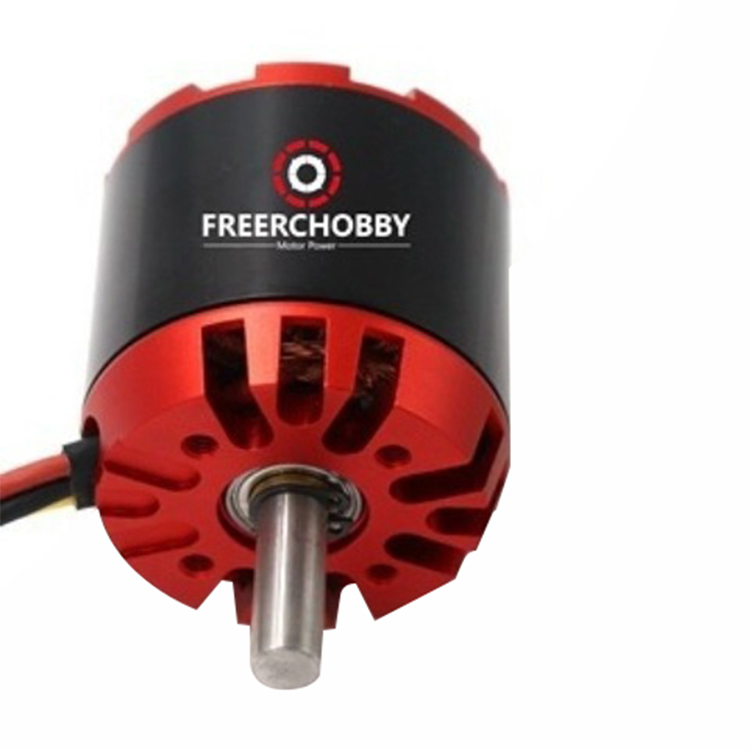In recent years, electric drones have evolved rapidly, driven by improvements in aerodynamics, materials, battery efficiency, and motor technology. Among the essential components in drone performance is the Outrunner Brushless DC Thrust Motor for Electric Drones, which directly impacts thrust, flight stability, and power efficiency. Integrating this motor into a drone's control system is a technical yet achievable process, one that requires a clear understanding of motor dynamics, electronic speed control (ESC), and real-time feedback loops.

The Outrunner Brushless DC Thrust Motor for Electric Drones differs from inrunner motors in design and function. In an outrunner configuration, the motor's outer shell rotates around a stationary core, which allows the motor to deliver higher torque at lower RPMs—ideal for drones that prioritize stability and lifting capability. This characteristic makes the Outrunner Brushless DC Thrust Motor for Electric Drones especially useful in multirotor configurations such as quadcopters and hexacopters, where precise motor synchronization is vital for controlled lift and directional changes.
At the heart of the drone's control system, the Outrunner Brushless DC Thrust Motor for Electric Drones interfaces with an ESC that interprets commands from the flight controller. These ESCs regulate power delivery using pulse width modulation (PWM), enabling variable motor speeds depending on the drone's movement requirements. For example, when the drone pitches forward, the rear motors—powered by their respective Outrunner Brushless DC Thrust Motor for Electric Drones—increase thrust, while the front motors reduce it. This coordinated adjustment allows the drone to tilt and move in the desired direction.
Flight stability relies heavily on the responsiveness of the Outrunner Brushless DC Thrust Motor for Electric Drones. Any latency or irregularities in motor performance can result in oscillation, drift, or loss of control. That's why these motors are engineered for smooth startup, consistent torque output, and a wide throttle range. The Outrunner Brushless DC Thrust Motor for Electric Drones achieves this with strong magnets, tightly wound copper windings, and durable bearings, all contributing to reduced internal resistance and heat generation.
Moreover, thermal management is crucial. The Outrunner Brushless DC Thrust Motor for Electric Drones often operates under variable environmental conditions, from high-altitude cold zones to warm coastal climates. Its open-frame design aids in passive cooling, making it more effective for prolonged flights without active cooling systems. This enhances both efficiency and motor lifespan.
When paired with a sophisticated control algorithm, the Outrunner Brushless DC Thrust Motor for Electric Drones supports complex maneuvers, including GPS-assisted hovering, obstacle avoidance, and return-to-home functionality. The motor's quick throttle response makes it particularly suitable for these automated functions, which demand real-time adjustments in motor thrust. Any delay or sluggish response could compromise flight precision, especially in commercial applications such as aerial surveying, mapping, or package delivery.
Additionally, many drone systems now employ feedback from gyroscopes, accelerometers, and barometers. These sensors continuously provide data to the flight controller, which then adjusts the power sent to each Outrunner Brushless DC Thrust Motor for Electric Drones to maintain balance and orientation. In wind gusts or during quick directional changes, the motor's ability to rapidly alter speed becomes essential to maintaining flight path accuracy.
Durability is another advantage of the Outrunner Brushless DC Thrust Motor for Electric Drones. Designed to withstand the rigors of frequent takeoffs and landings, as well as the vibrations associated with flight, these motors use lightweight materials such as aluminum alloys and reinforced composites. Additionally, they are relatively easy to service or replace, making them an accessible choice for hobbyists and professionals alike.